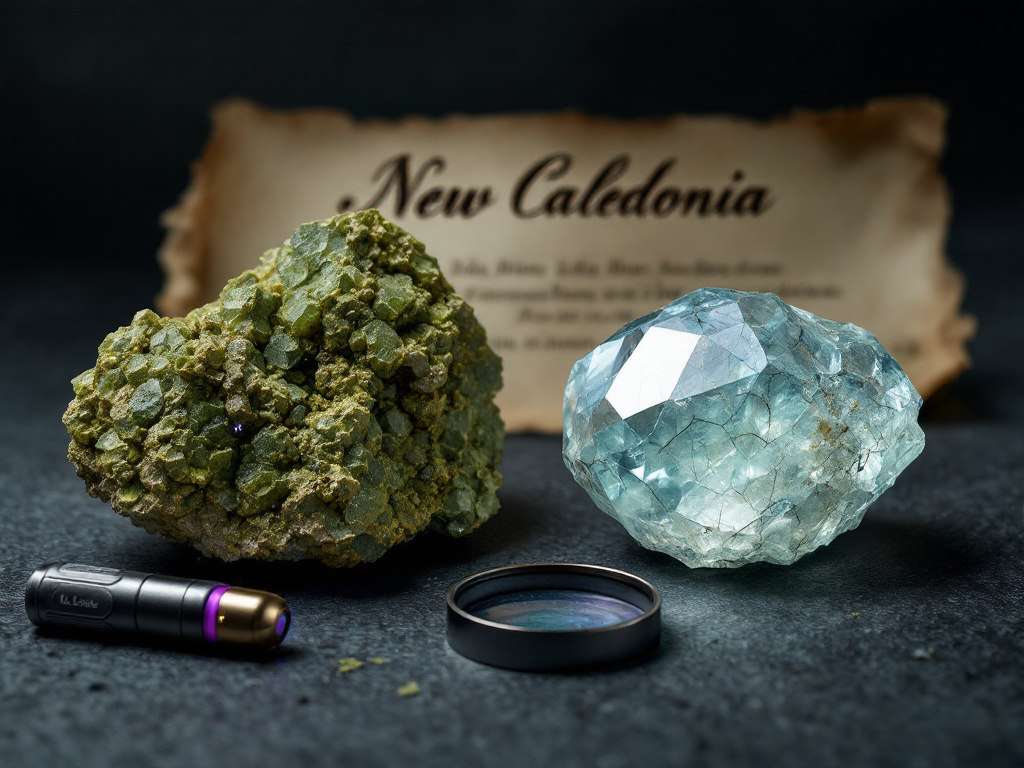Garniérite and pimélite are two closely related minerals that serve as significant sources of nickel. Containing between 15% to 33% nickel, these minerals are typically coarse and earthy in appearance, rarely forming nodules. Their colors range from vibrant green to pale whitish-blue or apple green.
Formation & Geological Significance

These minerals form through the alteration of peridotite rocks, where nickel is released from isomorphic elements. They also originate from certain pyroxenes and develop alongside other hydrated silicates.
Key deposits are found in:
- New Caledonia (Noumda) – 10% of global nickel production
- Cuba
- Greece, Upper Silesia (Poland), and Russia (Ural Mountains)
- Southern Bohemia (Czech Republic) – smaller deposits of pimélite-rich serpentinite
🔍 Pro Tip: Use a 10x Jeweler’s Loupe to examine their cryptocrystalline structure.
How to Identify Garniérite & Pimélite Like a Pro
Physical Properties at a Glance
| Attribute | Details |
|---|---|
| Hardness | 2.5–3.5 |
| Density | 2.5–2.8 |
| Streak Color | Colorless |
| Texture | Earthy, cryptocrystalline |
Top 3 Red Flags for Fake Minerals
- Unnaturally bright colors – genuine specimens have muted, earthy tones.
- Lack of cryptocrystalline structure – use a UV Light Tester to check fluorescence.
- Incorrect hardness – a steel knife (5.5 Mohs) should scratch them.
🛒 Recommended Tools:
- 10x Jeweler’s Loupe (for magnification)
- Gemstone UV Light Tester (detect synthetics)
Ethical Sourcing & Why Origin Matters
Key Mining Locations & Ethical Concerns
- New Caledonia – Major nickel producer, but mining impacts indigenous lands.
- Russia & Cuba – Geopolitical factors may affect sourcing transparency.
💎 Always ask for:
✔ Mine-to-market certification
✔ Geological reports (if available)
FAQ: Your Burning Questions Answered
Q: Are garniérite and pimélite used in jewelry?
A: Rarely—they’re mostly industrial nickel ores, but collectors value them for their unique colors.
Q: How can I tell if my specimen is real?
A: Test hardness, streak, and fluorescence. A 10x loupe helps spot natural inclusions.
Q: Where can I buy ethically sourced samples?
A: Check specialized mineral dealers or ICA-certified sellers.
Final Verdict: Should You Collect These Minerals?
If you’re a geology enthusiast or nickel industry analyst, garniérite and pimélite are fascinating additions. For gem collectors, their value lies in rarity rather than brilliance.
🔗 Explore More:
Written by Alex Carter, GIA Graduate Gemologist
12 years in mineralogy & ethical sourcing. Verify my GIA credentials.

